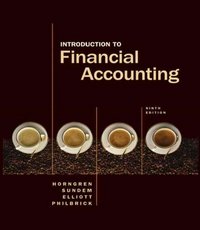Cheating on Inventories The Wall Street Journal reported: Cheating on inventories is a common way for small
Question:
Cheating on Inventories The Wall Street Journal reported: "Cheating on inventories is a common way for small businesses to chisel on their income taxes.... A New York garment maker, for example, evades a sizable amount of income tax by undervaluing his firm's inventory by 20% on his tax return. He hides about $500,000 out of a $2.5 million inventory." The news story concluded: "When it's time to borrow, business owners generally want profits and assets to look fat." The garment maker uses a different fiscal period for financial statements to his bank. "After writing down the inventory as of Dec. 31, he writes it up six months later when the fiscal year ends. In this way, he underpays the IRS and impresses his banker. Some describe that kind of inventory accounting as WIFL-Whatever I Feel Like." 1. At a 40% income tax rate, what amount of federal income taxes would the owner evade according to the news story?
2. Consider the next year. By how much would the ending inventory have to be understated to evade the same amount of income taxes? Use the following table and fill in the blanks: Honest Reporting Dishonest Reporting First Year Second Year First Year Second Year Beginning inventory $ 3,000,000 $ ? $ 3,000,000 $ ? Purchases 10,000,000 $10,000,000 10,000,000 10,000,000 Available for sale 13,000,000 ? 13,000,000 ? Ending inventory 2,500,000 2,500,000 2,000,000 ? Cost of goods sold $10,500,000 $ $11,000,000 Income tax savings @ 40%* $ 4,200,000 Income tax savings for 2 years together "This is the income tax effect of only the cost of goods sold. To shorten and simplify the analysis, sales and operating expenses are assumed to be the same each year.
Step by Step Answer:

Introduction To Financial Accounting
ISBN: 0131479725
9th Edition
Authors: Charles T Horngren, John A Elliott





